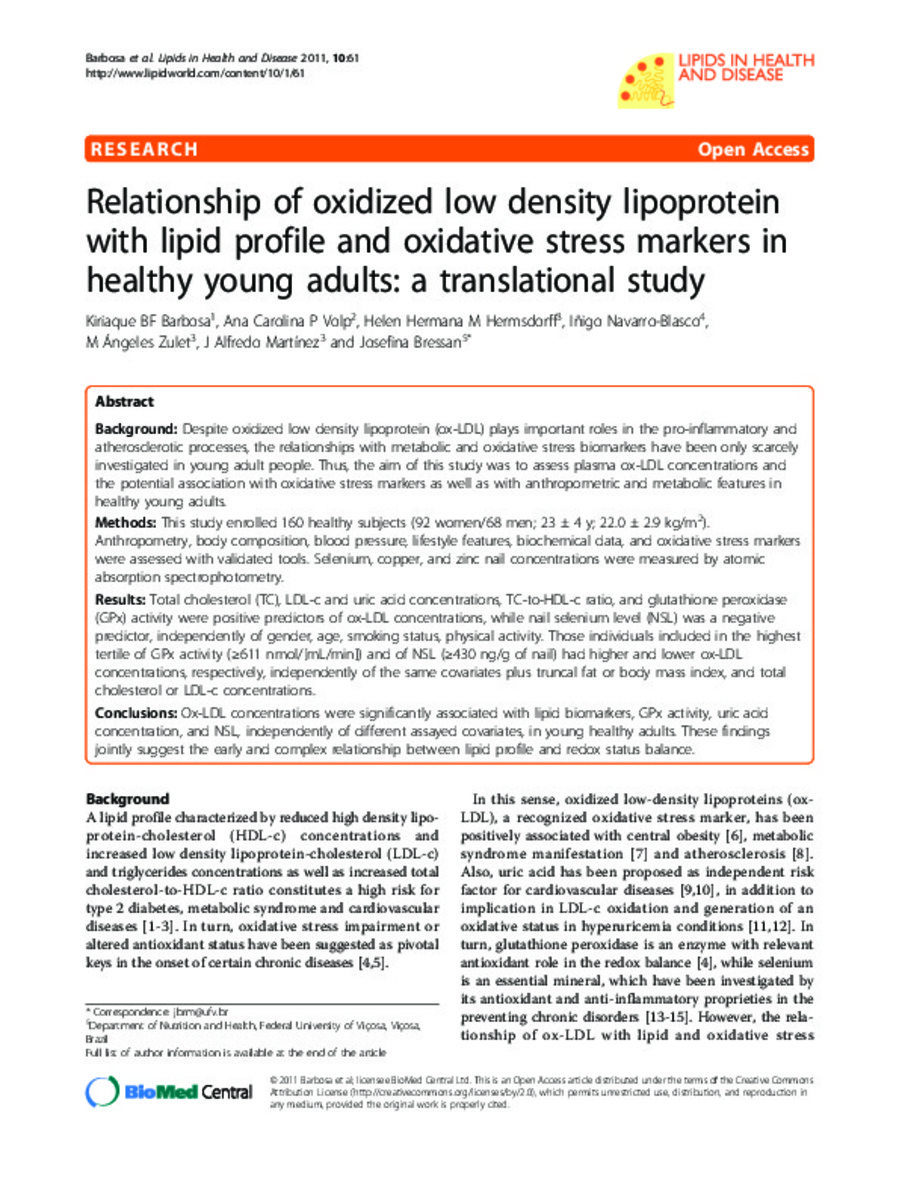Relationship of oxidized low density lipoprotein with lipid profile and oxidative stress markers in healthy young adults: a translational study
Palabras clave :
Lipids
Lipoproteins
Oxidative stress
Translational medical research
Fecha de publicación :
2011
Editorial :
Biomed Central
Cita:
Barbosa KB, Volp AC, Hermsdorff HH, Navarro-Blasco I, Zulet MA, Martinez JA, et al. Relationship of oxidized low density lipoprotein with lipid profile and oxidative stress markers in healthy young adults: a translational study. Lipids Health Dis 2011 Apr 19;10:61
Aparece en las colecciones:
Estadísticas e impacto
0 citas en

0 citas en

Los ítems de Dadun están protegidos por copyright, con todos los derechos reservados, a menos que se indique lo contrario.











